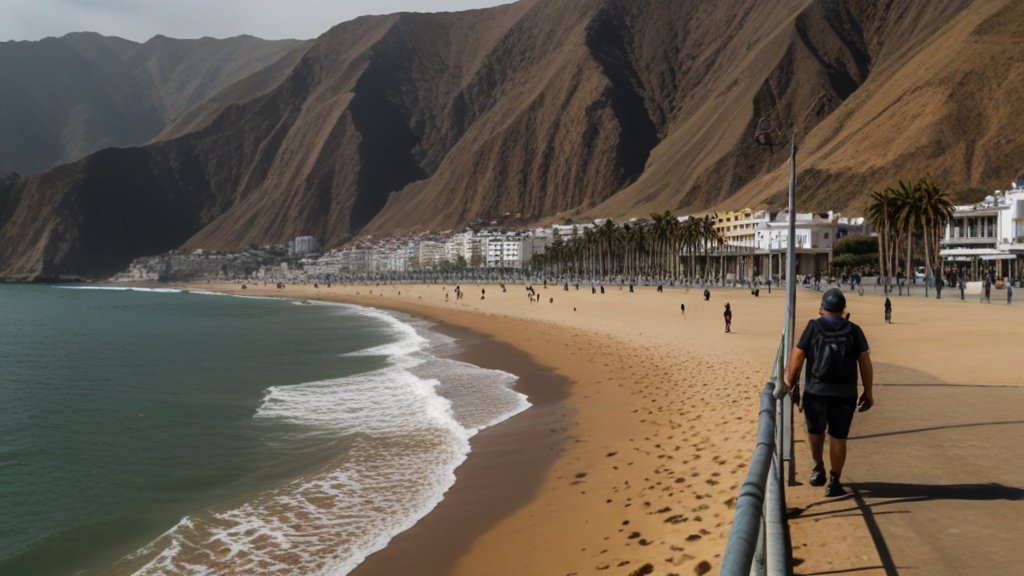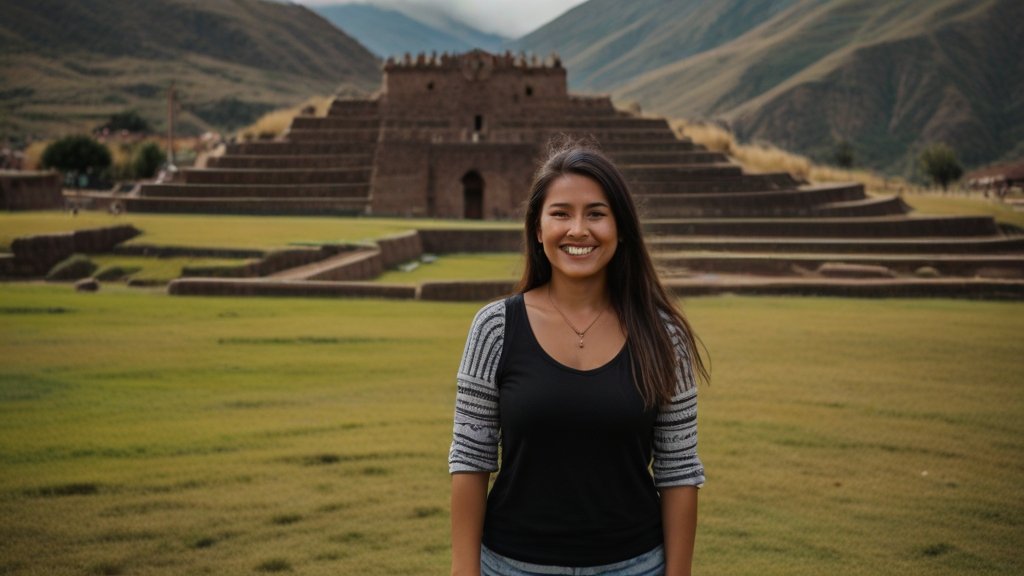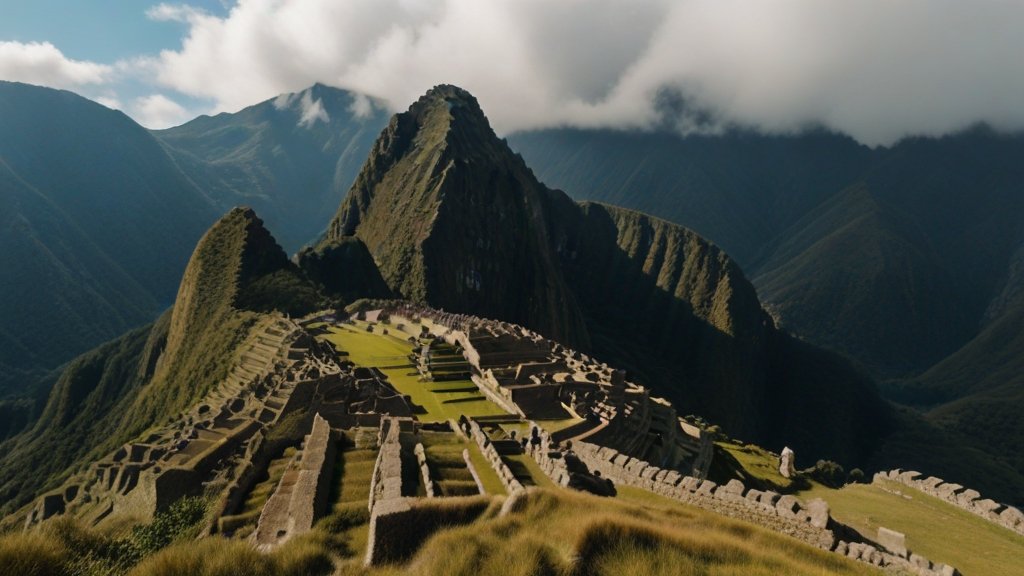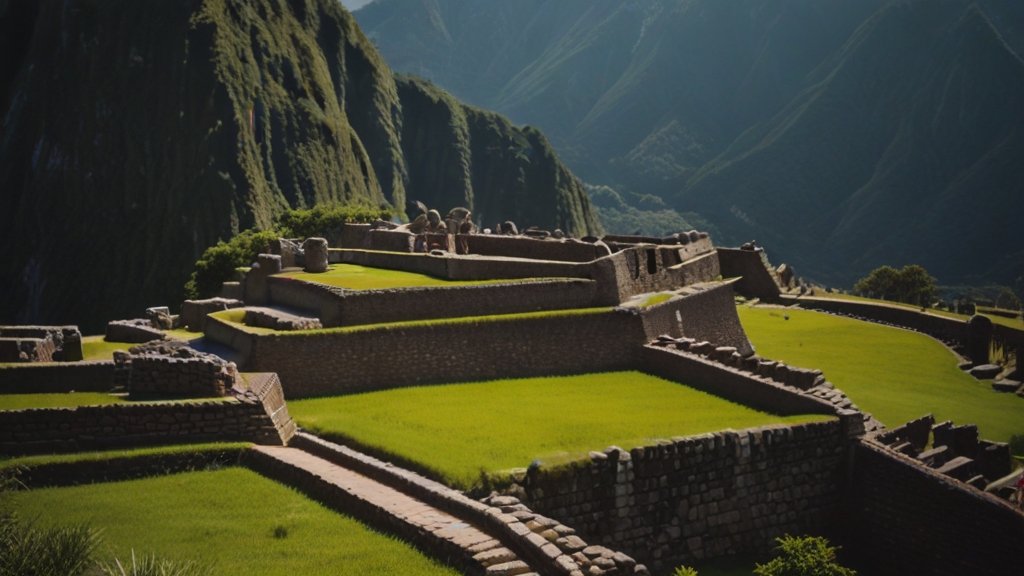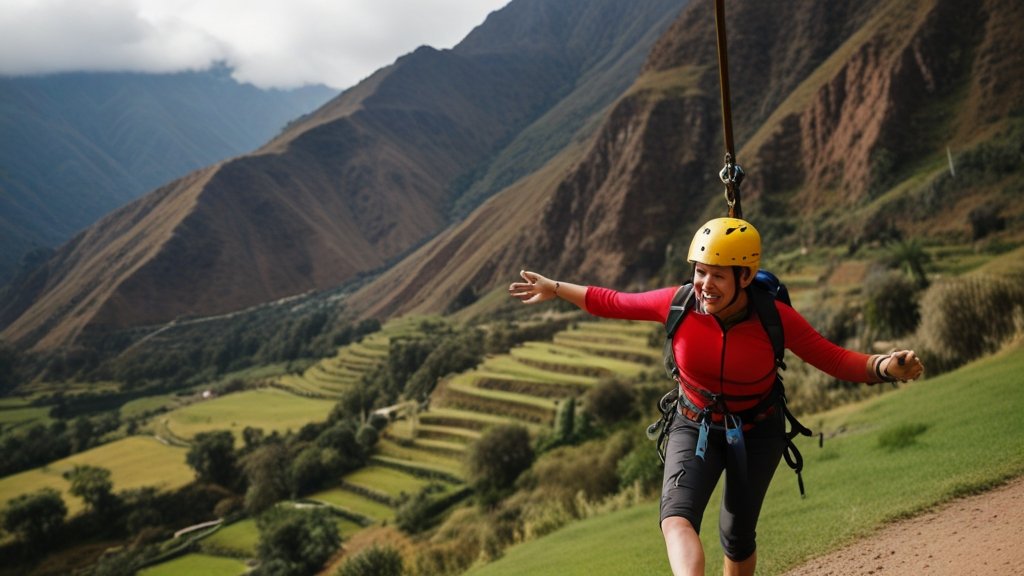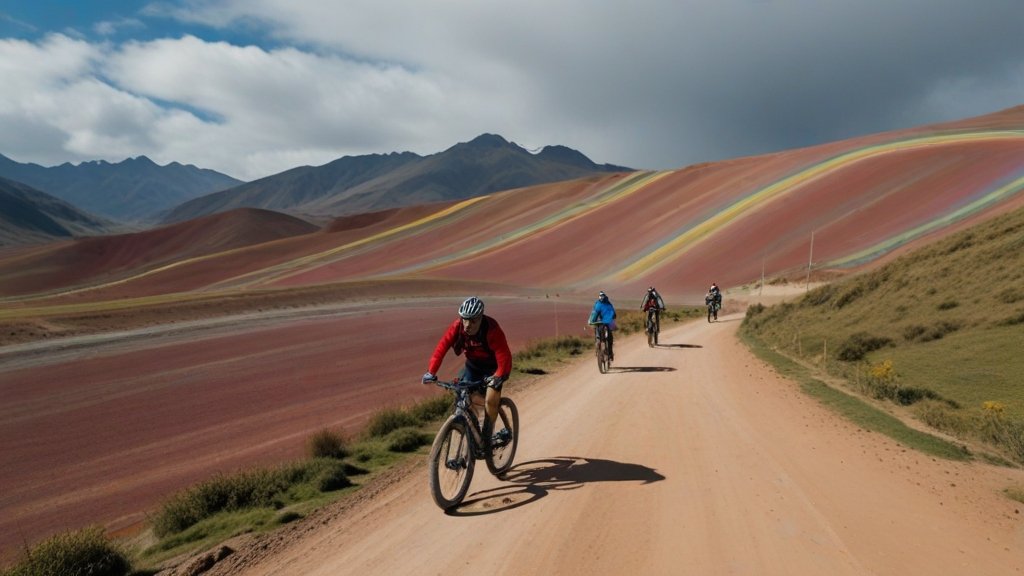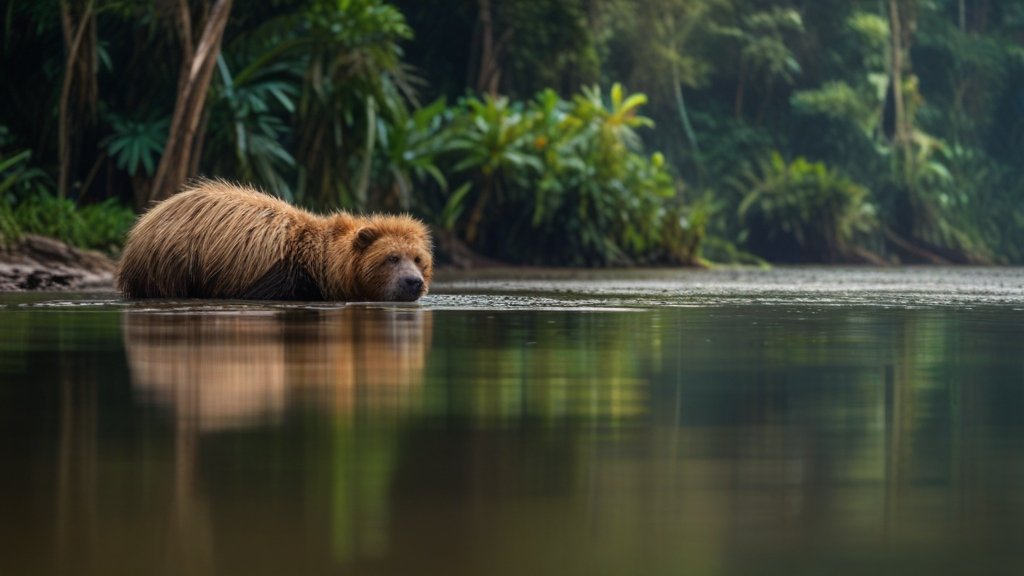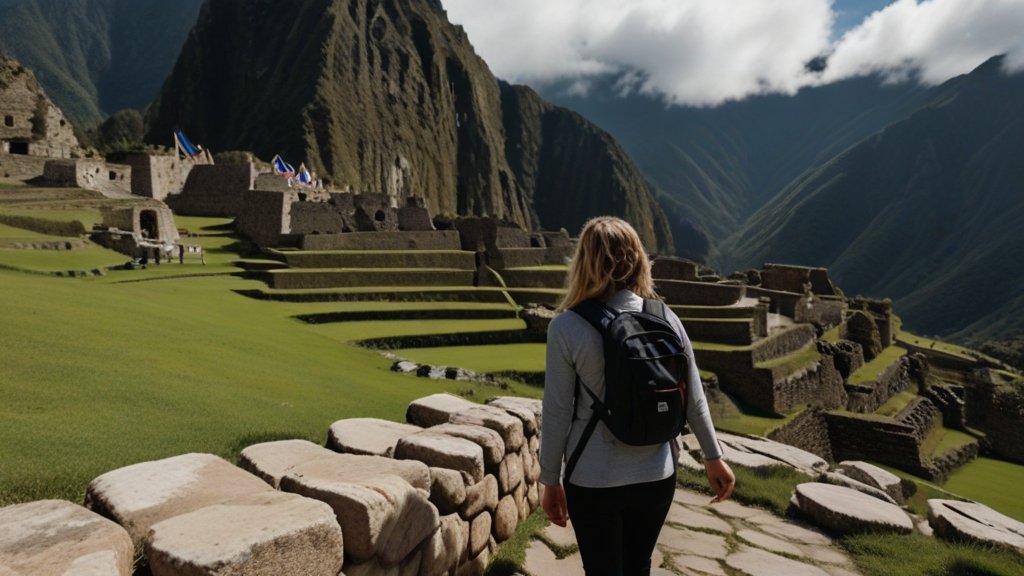Embark on a thrilling adventure through Peru, where ancient mysteries collide with vibrant culture, and breathtaking landscapes beckon explorers. In this 10-day itinerary, we’ll traverse the Andes, delve into the heart of the Amazon rainforest, and stand in awe before the enigmatic Machu Picchu. Buckle up, fellow wanderers, as we unravel the secrets of this South American gem.
Key Takeaways of 10-Day Peru Itinerary
| 1. | Machu Picchu Magic | Explore the iconic Inca citadel, Machu Picchu, and feel the energy of a lost civilization. |
|---|---|---|
| 2. | Amazon Immersion | Venture deep into the Amazon rainforest, where biodiversity thrives and secrets linger. |
| 3. | Cusco’s Charms | Discover Cusco’s cobblestone streets, ancient temples, and vibrant markets. |
| 4. | Sacred Valley Wonders | Wander through terraced fields, visit Pisac ruins, and soak in the Sacred Valley’s beauty. |
Day-by-Day Itinerary
Day 1: Arrive in Lima
Lima, the bustling capital of Peru, welcomes travelers with open arms and a symphony of sensory delights. As you step off the plane at Jorge Chavez International Airport (LIM), you’re about to embark on an adventure that blends history, culture, and culinary wonders. Let’s dive into the details of your arrival in this coastal metropolis.
1. Airport Arrival and Customs
- Jorge Chavez International Airport (LIM): Named after the Peruvian aviator Jorge Chavez, this modern airport serves as the main gateway to Peru. It’s located in Callao, just a short drive from Lima’s city center.
- Immigration and Customs: After disembarking, follow the signs to immigration. Have your passport, visa (if required), and customs declaration form ready. The process is usually efficient, but be patient during peak hours.
2. Transportation Options
- Airport Shuttle: Many hotels offer airport shuttles. If you’ve arranged one, look for your driver holding a sign with your name.
- Taxis: Official airport taxis are safe and reliable. Purchase a ticket at the taxi counter inside the terminal. Negotiate the fare upfront to avoid surprises.
- Ride-Sharing Apps: Apps like Uber and Cabify operate at the airport. Connect to Wi-Fi or use a local SIM card to request a ride.
- Public Buses: For budget travelers, public buses connect the airport to various parts of Lima. Research routes and schedules in advance.
3. Accommodation
- Miraflores: Most tourists stay in Miraflores, a trendy neighborhood by the Pacific Ocean. It’s known for its parks, cliffside views, and vibrant dining scene.
- Barranco: If you seek bohemian vibes, consider Barranco. This artsy district boasts colorful streets, art galleries, and cozy cafes.
- Airport Hotels: If you arrive late or have an early departure, there are several hotels near the airport for convenience.
4. Lima’s Culinary Scene
- Ceviche: Dive into Lima’s culinary heritage with a plate of fresh ceviche. Lime-marinated fish or seafood, red onions, and aji peppers create a zesty explosion of flavors.
- Pisco Sour: Kick off your Peruvian adventure with the national cocktail, the Pisco Sour. It’s a tangy blend of pisco (grape brandy), lime juice, simple syrup, and egg white.
- Local Eateries: Wander the streets and sample anticuchos (grilled skewers), causa (potato dish), and lomo saltado (stir-fried beef).
5. Exploring Lima
- Miraflores Boardwalk: Take a leisurely stroll along the Malecón de Miraflores. Admire the cliffs, paragliders, and the Pacific Ocean stretching to the horizon.
- Larcomar: Visit Larcomar, a shopping center built into the cliffs. It offers boutiques, restaurants, and stunning sunset views.
- Huaca Pucllana: Explore the ancient adobe pyramid in Miraflores. Guided tours reveal its history and significance.
- Historic Center: Venture into Lima’s historic heart. Plaza de Armas, the Presidential Palace, and the Cathedral await.
6. Safety Tips
- Currency Exchange: Change money at authorized exchange offices or ATMs. Avoid street money changers.
- Avoid Petty Theft: Keep an eye on your belongings, especially in crowded areas.
- Altitude: Lima is at sea level, but if you’re continuing to Cusco or other high-altitude destinations, take it easy to acclimate.
¡Bienvenidos a Lima! 🇵🇪✨
Day 2: Cusco and the Sacred Valley
Nestled high in the Andes of Peru, the Sacred Valley—also known as the Urubamba Valley—weaves a tapestry of history, culture, and breathtaking landscapes. This mystical region, with Cusco as its heart, invites travelers to step back in time and explore the remnants of the mighty Inca Empire. Let’s embark on a journey through this enchanting land.
1. Geography and Elevation
- Sacred Valley: Stretching over 60 miles from east to west, the Sacred Valley cradles the Urubamba River. Surrounded by towering Andean peaks, it sits at an elevation that never dips below 6,700 feet and often climbs above 9,500 feet. The thin air challenges newcomers, but the rewards are immense.
- Sahuasiray and Veronica: These twin peaks, standing over 19,000 feet, dominate the horizon. Their snow-capped majesty sets the stage for the valley’s drama.
2. A River of Sacred Origins
- Urubamba River: In the Quechua language, Urubamba means “sacred river.” Fed by mountain streams born from melting snow, it has carved the valley over millennia. Its banks cradle lush meadows—a sanctuary from the harsh Andes and the steamy Amazon.
3. Ancient Inhabitation
- Chanapata and Qotacalla: Archaeologists believe the Sacred Valley has been continuously inhabited for over 3,000 years. The Chanapata people arrived around 800-900 BCE, followed by the Qotacalla and Killke civilizations. Fertile lands allowed them to sustain their populations.
- The Rise of the Inca: Around 1,000 CE, the Inca civilization ascended. Their capital, Cusco, became a seat of power. Through diplomacy, military might, and administrative control, the Inca claimed the Sacred Valley. Their empire stretched far beyond.
4. The Ruins of the Sacred Valley
- Pisac: Climb to the Pisac ruins, perched dramatically on a hilltop. Terraces, temples, and sweeping views await.
- Ollantaytambo: Wander the hillside ruins of Ollantaytambo, where massive stone terraces guard against time. Nearby, the town bustles with life.
- Moray: Marvel at the circular agricultural terraces of Moray, an ancient experimental farm.
- Saqsaywaman: Pronounced like “sexy woman,” this fortress overlooks Cusco. Its massive stones fit together like a cosmic puzzle.
- Chinchero: Visit the traditional village of Chinchero, known for its vibrant textiles and Incan ruins.
- Maras Salt Mines: Explore the intricate salt pans of Maras, where salt has been harvested for centuries.
5. Gateway to Machu Picchu
- Machu Picchu: The ultimate reward awaits. From Cusco, take the train to Aguas Calientes, then ascend to the iconic mountaintop citadel. Stand where emperors once stood, surrounded by mist and mystery.
¡Bienvenidos a Cusco y el Valle Sagrado! 🇵🇪✨
Day 3: Exploring Cusco
Welcome to the enchanting city of Cusco, Peru—a place where history comes alive through its magnificent ruins. Cusco is a treasure trove of ancient Inca sites that tell the story of a once-thriving civilization. While many tourists opt for guided tours to explore these ruins, there is something truly special about discovering them on your own. By venturing off the beaten path and exploring Cusco’s ruins without a tour, you’ll have the freedom to roam at your own pace and immerse yourself in the fascinating history that surrounds you.
Why Explore Cusco’s Ruins Without a Tour?
Exploring Cusco’s ruins without a tour offers a unique and immersive experience that allows you to connect with the ancient history and natural beauty of the area in a more personal and meaningful way. Here are a few compelling reasons why you should consider venturing off the beaten path:
- Freedom and Flexibility:
- When you explore Cusco’s ruins without a tour, you have the freedom to create your own itinerary and explore at your own pace.
- Take your time to soak in the awe-inspiring views, wander through the ruins, and truly connect with the historical significance of each site.
- No rigid schedules—just you, the ancient stones, and the Andean breeze.
- Intimate Connection:
- By going solo, you forge a deeper connection with the ancient sites. Feel the energy of the stones beneath your fingertips.
- Experience the serenity of these sacred places without the hustle and bustle of a large tour group.
- Imagine the whispers of Incan rulers and the rituals that once took place here.
- Create Your Own Memories:
- Self-guided exploration allows you to create your own meaningful memories. Capture that perfect sunrise photo or sit quietly and absorb the surroundings.
- Be the author of your own adventure. Each step becomes part of your personal story.
Must-Visit Ruins in and Around Cusco
1. Sacsayhuaman (Saqsaywaman)
- This fortress overlooks Cusco. Its massive stones fit together like a cosmic puzzle.
- Explore the zigzagging walls, terraces, and ceremonial platforms.
- Stand in awe of the engineering marvel that defies time and earthquakes.
2. Q’enqo (Kenko)
- A mysterious site with intricate rock carvings and underground chambers.
- Imagine ancient priests conducting rituals in the dimly lit passages.
- Climb to the top for panoramic views of Cusco and the surrounding valley.
3. Tambomachay
- Known as the “Inca Baths,” Tambomachay features aqueducts, fountains, and ceremonial water channels.
- Feel the cool mountain spring water that once flowed through these channels.
- Reflect on the importance of water in Incan culture.
4. Puka Pukara
- The “Red Fortress” stands guard over the road to Cusco.
- Explore its watchtowers, walls, and courtyards.
- Was it a military outpost or a resting place for travelers?
5. Tipón
- A bit farther from Cusco, Tipón boasts impressive terraces and intricate irrigation systems.
- Wander through the agricultural terraces and marvel at the precision of the water channels.
- Tipón’s beauty lies in its harmony with nature.
Tips for Your Self-Guided Exploration
- Acclimatize: Cusco’s altitude can take your breath away—literally. Spend a day acclimating before tackling the ruins.
- Comfortable Shoes: You’ll do a fair amount of walking and climbing. Sturdy shoes are essential.
- Sun Protection: The Andean sun can be intense. Wear a hat, sunscreen, and sunglasses.
- Water and Snacks: Stay hydrated and energized.
- Respect the Sites: These ruins are sacred. Treat them with reverence.
So, lace up your hiking boots, grab your camera, and let’s embark on an unforgettable adventure through the ancient wonders of Cusco! 🏛️🌄✨’
Day 4: Inca Trail to Machu Picchu
The Inca Trail to Machu Picchu is a legendary hiking trail in Peru that culminates at the awe-inspiring Machu Picchu. Let’s delve into the fascinating details:
- Overview:
- The Inca Trail, also known as Camino Inca or Camino Inka, is a trek lasting several days. It connects the sacred site of Machu Picchu from the Sacred Valley of the Incas.
- This ancient trail traverses the Peruvian mountains, subtropical jungles, and remarkable archaeological sites.
- It is believed to be the pilgrimage route used by the Incas in the 15th century to reach the mystical city of Machu Picchu.
- Trail Routes:
- The Inca Trail comprises three overlapping trails:
- Mollepata Trail: The longest route with the highest mountain pass. It intersects with the Classic route.
- Classic Inca Trail: Trekkers typically take four or five days to complete this iconic trail. It starts either from Km 88 or Km 82 (from Cusco), ascending along the Cusichaka River.
- One Day Trail: A shorter option for those with limited time.
- The Inca Trail comprises three overlapping trails:
- Classic Inca Trail Details:
- Distance: Approximately 26 miles (42 km).
- Duration: 4 days and 3 nights.
- Starting Point: Km 82 (about 45 minutes from Ollantaytambo).
- Terminus: The Sun Gate (known as Inti Punku in Quechua) overlooking Machu Picchu.
- Highlights Along the Trail:
- Patallaqta (Llaqtapata): An Inca ruin used for religious ceremonies, crop production, and housing for soldiers.
- Wayllapampa: A small village along the trail with approximately 400 inhabitants.
- Cusichaka River: The trail undulates, ascending along this river.
- Sun Gate: The ultimate reward—a breathtaking view of Machu Picchu.
- Altitude and Challenges:
- The trail ascends to beyond 4,200 meters (13,800 feet) above sea level, which can lead to altitude sickness.
- Concerns about overuse and erosion have led to strict regulations. Only a maximum of 500 people are allowed on the trail each day, with only 200 trekkers.
- Advance booking is mandatory, especially during the high season.
- Trail Closure:
- The trail is closed every February for cleaning and maintenance.
In summary, the Inca Trail is not just a physical journey; it’s a passage through time, history, and natural wonders—a pilgrimage echoing the footsteps of ancient civilizations. 🏞️🌄🚶♂️
For more information, you can explore additional resources such as Wikipedia, AllTrails, and Brogan Abroad. Happy trekking! 🌿🌟
Day 5: Mystical Machu Picchu
Machu Picchu, nestled high in the Andes Mountains of Peru, stands as a testament to the ingenuity and mystique of the ancient Inca civilization. Let’s unravel the secrets of this awe-inspiring archaeological marvel:
- Discovery and History:
- Construction: Machu Picchu, meaning “Old Mountain” in Quechua, is believed to have been constructed in the 15th century by the Inca emperor Pachacuti.
- Hidden Gem: For centuries, it remained hidden from the outside world, abandoned during the Spanish conquest.
- Rediscovery: In 1911, American explorer Hiram Bingham “rediscovered” this mystical place, unveiling its grandeur.
- The Enigmatic Site:
- Location: Perched on a ridge nearly 8,000 feet above sea level, Machu Picchu overlooks breathtaking valleys and peaks.
- Purpose: It served as a royal retreat for the Incan elite, built by Pachacuti.
- Incan Legacy: Incans inhabited this sacred site for 100 years until their conquest by the Spanish.
- Visiting Machu Picchu:
- Entrance: The journey begins in the town of Aguas Calientes, a half-hour away from Machu Picchu.
- Sunrise: Arriving early, witness the sun rising over the ancient stones—a moment of sheer wonder.
- Guided Tour: Explore with an Inca Trail guide who unveils the history, architecture, and significance.
- Huayna Picchu: The iconic peak forming the backdrop of Machu Picchu offers breathtaking views. Unfortunately, our climb was thwarted, but sometimes fate orchestrates its own magic.
- Mystical Moments: As clouds of mist swirl around the valley, Machu Picchu reveals its ethereal beauty. Tim and I watched in awe, feeling the ancient spirits whispering through the fog.
- Inca Bridge and Sanctuary Lodge:
- Inca Bridge: Walk to the Inca Bridge, the old gateway into Machu Picchu, steeped in history.
- Lunch at Sanctuary Lodge: Enjoy a buffet lunch at the Machu Picchu Sanctuary Lodge, savoring the flavors amidst ancient walls.
In this mystical realm, time dissolves, and the stones echo tales of a civilization lost yet found. 🌄🏛️
Day 6: Zip-Lining in the Sacred Valley
Zip-lining in the Sacred Valley, nestled amidst the stunning Andean landscapes of Peru, promises an exhilarating adventure. Let’s soar through the details:
- Location and Setting:
- The Sacred Valley of the Incas, near Cusco, serves as the backdrop for this adrenaline-pumping experience.
- Accompanied by professional guides, you’ll embark on a thrilling journey that combines zip-lining and via ferrata (a climbing route with iron rungs and cables).
- The Zip-Line Circuit:
- The excursion consists of 7 lines or cables, ranging from 150 meters to 700 meters in length, totaling 2,800 meters.
- These cables stretch between points at varying elevations, allowing you to propel yourself across the valley, propelled by gravity.
- Each line offers a unique experience, from easy and short to more challenging and longer ones.
- Getting Started:
- To reach the first zip-line, you’ll embark on an easy 30-minute hike.
- Along the way, you’ll encounter a via ferrata section, where you’ll use safety equipment to climb.
- Once you’re at the first cable, the adventure truly begins!
- Safety and Equipment:
- Your zip-line equipment includes:
- A pelvic harness
- A helmet
- Gloves
- A zip-line kit (pulley, carabiners, and lanyard)
- A via ferrata set
- All zip-line routes in the Sacred Valley are equipped with a Via Ferrata system, ensuring your safety.
- Guides are trained in first aid, mountain rescue, and vertical rope rescue.
- Your zip-line equipment includes:
- The Thrill of Flight:
- As you launch from each platform, you’ll feel like a bird or a condor, soaring above the magnificent Andean landscape.
- The closer you get to the end of each cable, the slower your speed, allowing you to savor the views.
- For an extra thrill, try the “Spiderman” move—attach yourself to the line without holding it, while the guide behind you controls everything.
- Practical Details:
- Duration: The zip-lining experience typically takes 3 to 4 hours, depending on the group size.
- Minimum Age: Children as young as 7 years old can participate.
- What to Wear: Opt for light clothing (no shorts) and comfortable shoes (no sandals). Keep in mind that it can get colder and windier when climbing.
Don’t miss this chance to feel the freedom of flight amidst the stunning landscapes of the Sacred Valley. Whether you’re an adventure enthusiast or a first-timer, zip-lining here is an unforgettable experience! 🌄🪂
Day 7: Mountain Biking or Rainbow Mountain
Let’s explore the exciting world of mountain biking at Rainbow Mountain in Peru. Whether you’re an adrenaline junkie or a nature enthusiast, this geothermal wonder offers an unforgettable experience:
- Rainbow Mountain Biking Tour (Vinicunca):
- Location: Rainbow Mountain, also known as Vinicunca, is situated in the Andes near Cusco, Peru.
- Trail Highlights:
- Unique Landscape: The trail winds through a fascinating volcanic dome with steaming cliffs and colorful earth, creating a surreal backdrop.
- Technical Downhill Single-Track: Brace yourself for thrilling descents on purpose-built mountain biking trails.
- Panoramic Views: The steep climb rewards riders with breathtaking 360-degree vistas of surrounding ranges, valleys, and snow-capped peaks.
- Trail Details:
- Distance: Approximately 10 kilometers (about 6.2 miles).
- Grade: Cross Country Grade 4 – Advanced.
- Proximity: Just 30 minutes from Cusco, making it accessible for day trips.
- Trail Experience:
- Start your adventure from the trailhead.
- Climb upward along the dual-use (walking and biking) trail called Te Tihi O Ruru.
- Along the way, learn about the mountain’s history and regeneration of rare native vegetation through information panels.
- Reach the summit for those breathtaking panoramic views.
- On clear days, you might even spot other peaks and the iconic Ausangate mountain.
- Collaborative Effort: The trail was built collaboratively by the Department of Conservation and local biking enthusiasts.
- Additional Resources:
- Guided Tours: Consider taking a guided mountain biking tour to enjoy the freedom of riding without logistical hassles.
- Safety and Tips: Peru offers diverse riding experiences, from challenging mountain trails to scenic routes. Plan for safety and acclimatize to the altitude.
- Practical Travel Advice: If you’re planning a biking holiday in Peru, check out practical travel tips before you depart.
Rainbow Mountain invites you to pedal through its vibrant landscapes, witness geothermal wonders, and feel the rush of mountain biking. 🚵♂️🌈
Day 8-9: Amazon Jungle Immersion
Let’s delve into the captivating world of Amazon Jungle Immersion. Whether you’re an intrepid explorer or a nature enthusiast, this lush rainforest beckons with its mysteries and wonders:
1. The Amazon Rainforest: A Biodiverse Haven
The Amazon Rainforest, often referred to as the Amazon Jungle, stands as the largest rainforest on Earth. It sprawls across multiple South American countries, including Brazil, Peru, Colombia, Venezuela, Ecuador, Bolivia, Guyana, Suriname, and French Guiana. Within its verdant embrace lies the Tambopata National Reserve in Peru—a sanctuary teeming with life.
2. Refugio Amazonas: Your Jungle Oasis
- Location: Refugio Amazonas is nestled deep within the tropical jungle, a mere two hours from the Puerto Maldonado airport in southeastern Peru.
- Ecolodge: With 32 rooms, this ecolodge offers a blend of adventure and comfort.
- Scientific Hub: Refugio Amazonas plays a vital role in wildlife recovery. It serves as the headquarters for the Wired Amazon Program, where visitors can actively participate in scientific projects for the conservation of Tambopata.
3. Wildlife Encounters Await
- Macaw Clay Lick at Dawn: Witness the mesmerizing spectacle of vividly colored macaws and parrots flocking to the riverbanks. They feast on mineral-rich clay, detoxifying their diet.
- River Otters and Black Caimans: Spot endangered giant river otters playing in oxbow lakes, while elusive black caimans glide through the waters.
- Birdwatcher’s Paradise: Over 600 bird species call this reserve home. From tiny hummingbirds to imposing eagles, the diversity is astounding.
- Monkey Island: Observe playful squirrel monkeys leaping between trees, revealing the intricate social structures of primates.
- Ecosystem Exploration: Guided walks unveil the delicate balance of the entire ecosystem. Expert guides explain how each species contributes to the jungle’s harmony.
4. Best Time to Explore
- Year-Round: The Amazon’s consistent weather conditions make exploration possible throughout the year.
- Wet Season (January to June): Expect warm, rainy, and humid weather. Daily showers are common, but it’s also mosquito season.
- Dry Season (July to December): Enjoy reduced rainfall, drier atmosphere, and lower river levels. Ideal for exploration on foot and wildlife spotting.
5. Where to Go: Iquitos and Puerto Maldonado
- Iquitos: The largest city along the Amazon River in Peru, serving as the northern gateway to the Peruvian Amazon basin.
- Puerto Maldonado: Located in southeastern Peru, it’s the city where your rainforest adventure begins. From here, embark on a boat journey along the Tambopata River to reach Refugio Amazonas.
6. Your Jungle Oasis Awaits
Prepare for an immersive journey into the heart of the Amazon. Refugio Amazonas promises unparalleled wildlife encounters, scientific insights, and the magic of pristine rainforest. 🌿🦜🌳
Day 10: Farewell, Peru
- Return to Cusco: Fly back to the ancient Inca capital. Reflect on the magic you’ve witnessed.
- Last Souvenirs: Stroll through Cusco’s markets. Alpaca sweaters, vibrant textiles, and hand-carved masks beckon.
- Final Pisco Sour: Sip Peru’s national cocktail, the Pisco Sour, at a rooftop bar. The city lights twinkle below.
- Homeward Bound: Board your flight, but know that Peru has etched itself into your soul. You’ll dream of misty ruins, dense jungles, and llamas grazing against mountain backdrops.
Frequently Asked Questions (FAQs) for Peru Trip Itinerary 10 Days
| Question | Answer |
|---|---|
| 1. What is the best time to visit Peru? | The best time is from May to September for pleasant weather and clear skies. |
| 2. Do I need a visa to visit Peru? | Most travelers from North America and Europe don’t need a visa for stays up to 90 days. |
| 3. What is the altitude in Cusco and Machu Picchu? | Cusco is at 11,152 feet (3,399 meters), and Machu Picchu is at 7,972 feet (2,430 meters). |
| 4. Can I drink tap water in Peru? | It’s safer to stick to bottled or filtered water to avoid stomach issues. |
| 5. What currency is used in Peru? | The official currency is the Peruvian Sol (PEN). |
| 6. Is it safe to travel in Peru? | Peru is generally safe, but take usual precautions and be aware of your surroundings. |
| 7. How do I get to Machu Picchu? | Take the Inca Trail, a train, or a combination of both. |
| 8. What’s the weather like in Lima? | Lima has a mild coastal climate, with temperatures averaging around 68°F (20°C). |
| 9. Can I visit Lake Titicaca in 10 days? | Yes, consider a day trip from Puno to explore the floating islands. |
| 10. Are there direct flights to Cusco? | Yes, several airlines offer direct flights from Lima to Cusco. |
| 11. How much does the Inca Trail permit cost? | The Inca Trail permit costs around $75. Book in advance! |
| 12. What’s the best way to acclimate to the altitude? | Spend a few days in Cusco before starting the Inca Trail. |
| 13. Can I visit Rainbow Mountain in 10 days? | Yes, take a day trip from Cusco to see this colorful wonder. |
| 14. What’s the food like in Peru? | Peruvian cuisine is diverse and delicious! Try ceviche, lomo saltado, and aji de gallina. |
| 15. How do I get from Cusco to Aguas Calientes? | Take a train or hike the Salkantay Trail. |
| 16. Is Machu Picchu crowded? | Yes, especially during peak season. Consider visiting early or late in the day. |
| 17. Can I visit the Amazon rainforest in 10 days? | Yes, take a flight to Puerto Maldonado and explore the jungle. |
| 18. What’s the weather like in Cusco? | Cusco has a cool and dry climate, with daytime temperatures around 60°F (15°C). |
| 19. How do I book a guided tour of Machu Picchu? | Many tour operators offer guided tours from Cusco. |
| 20. What’s the dress code for Machu Picchu? | Wear comfortable layers, sturdy shoes, and a hat. |
Pre-Trip Checklist for Peru 10 Days Itinerary
Planning a trip to Peru? Whether you’re exploring ancient ruins, hiking the Andes, or diving into the Amazon rainforest, packing the right essentials is crucial. Here’s a comprehensive checklist to ensure you’re well-prepared for your 10-day Peruvian adventure:
1. Clothing (All Seasons)
Basics:
- Moisture-Wicking T-Shirts and Tops: Lightweight and breathable for comfort.
- Long-Sleeve Shirts: Protect against sunburn and chilly evenings.
- Convertible Pants: Ideal for both warm days and cool nights.
- Hiking Shorts: Quick-drying and comfortable.
- Underwear and Socks: Moisture-wicking and odor-resistant.
- Swimwear: For hot springs or beach visits.
Outerwear:
- Rain Jacket: Essential for sudden showers or misty days.
- Fleece or Insulated Jacket: Layer for colder nights.
- Hat and Sunglasses: Shield from intense sun.
Footwear:
- Hiking Boots or Trail Shoes: Sturdy and comfortable for hikes.
- Sandals or Flip-Flops: For relaxing or beach days.
2. Additional Miscellaneous Items
- Travel First Aid Kit: Bandages, antiseptics, pain relievers, and any necessary medications.
- Toiletry Bag: Toothbrush, toothpaste, shampoo, soap, and other personal hygiene items.
- Money Belt: Keep your valuables safe.
- Reusable Water Bottle: Stay hydrated and reduce plastic waste.
- Travel Adapter: Peru uses Type A and Type C plugs.
- Headlamp or Flashlight: Useful for early morning hikes or power outages.
- Reusable Shopping Bag: Eco-friendly and handy for souvenirs.
3. Hiking-Specific Items
- Daypack: Lightweight and comfortable for day hikes.
- Trekking Poles: Helpful for steep trails.
- Hiking Socks: Moisture-wicking and blister-resistant.
- Sunscreen and Lip Balm: Protect against high-altitude sun.
- Insect Repellent: Especially important for Amazon jungle excursions.
4. Estimated Costs (for Reference)
- Inca Trail Permit: Around $75 (book in advance).
- Machu Picchu Entrance Fee: Approximately $50 (discounts available for students and children).
- Scenic Flight over Nazca Lines: Prices vary but expect around $80-$100.
- Meals: Budget around $10-$20 per meal.
- Accommodation: Hostels or budget hotels range from $20-$50 per night.
- Transportation: Domestic flights or buses, budget around $100-$200.
Remember, adapt this checklist based on your personal needs and preferences. Peru awaits with its vibrant culture, stunning landscapes, and ancient wonders! 🌄🌿🇵🇪


